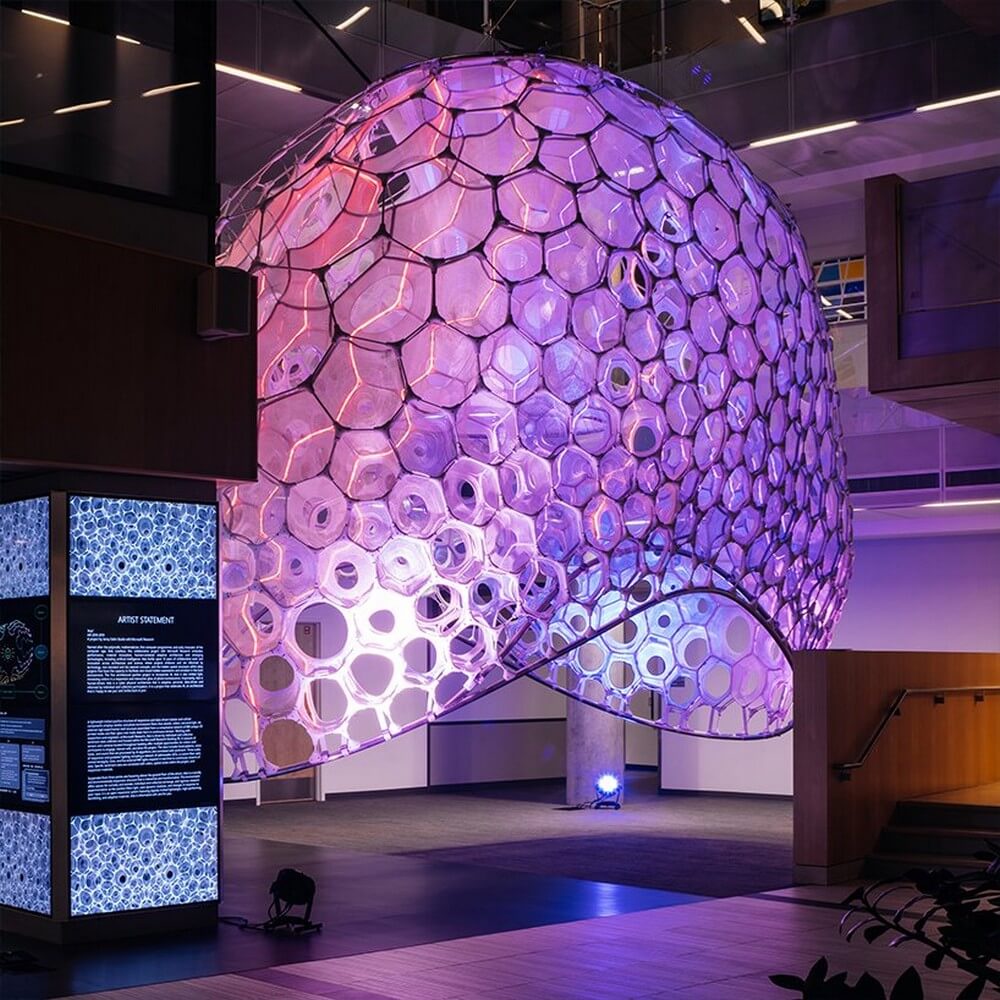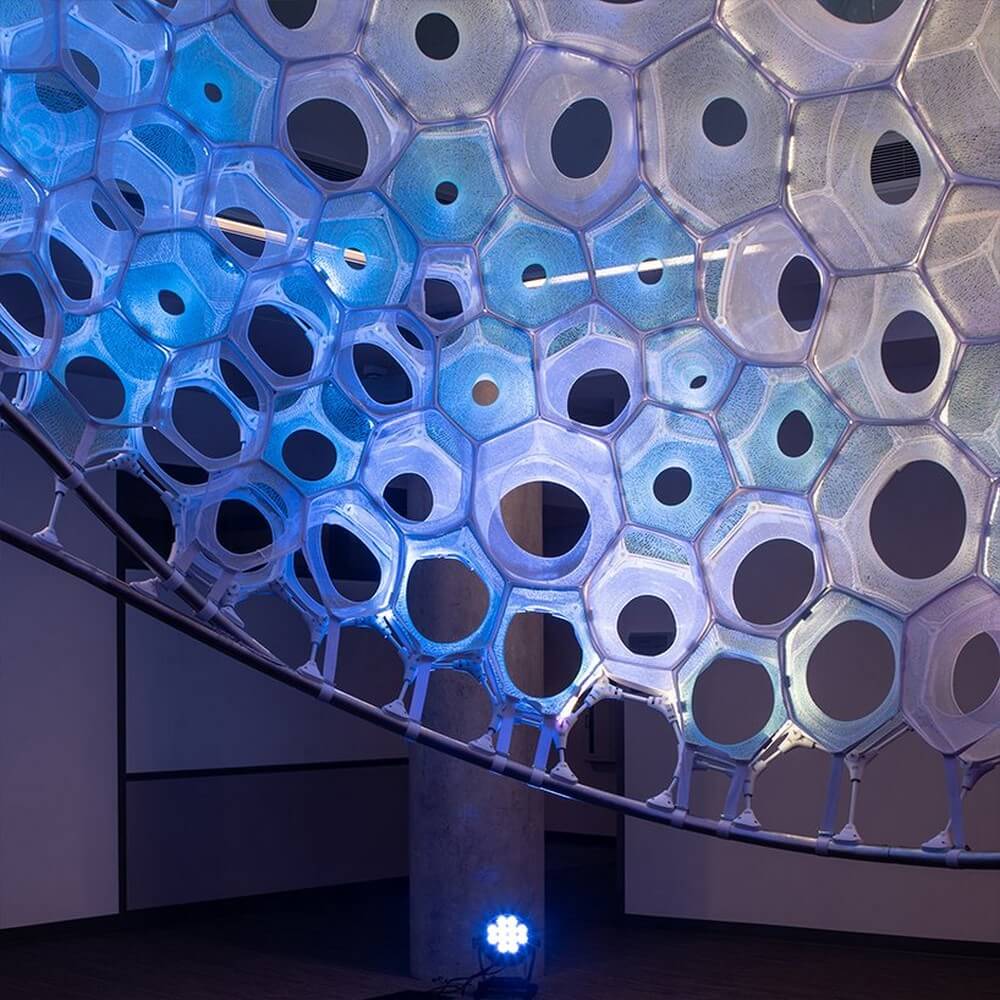Ada
In collaboration with microsoft research, artist-in-residence jenny sabin has designed the ‘ada’ installation for the tech company’s redmond campus in washington. The work takes its name from ada lovelace, the english mathematician who is often credited as one of the first computer programmer. The architectural pavilion incorporates the use of AI to create a wholly immersive experience that transforms personal data into light and colors.

Ada builds upon 13 years of collaborative work and innovation across architecture and science. by embracing AI, the project investigates how hidden expressions and emotion in the built environment can be revealed through the use of technology. For sabin‘s work, the artist has formed a lightweight, knitted structure of responsive and data-driven tubular and cellular components that employs textiles and photo-luminescent fibers to absorb, collect, and emit light.

Informed by individual and collective participation, the structure reacts and changes to people’s varying facial expressions and tone of voice. Immersing visitors in a responsive and interactive glow of photo-luminescence, ada has been created as an architecture that is ‘happy to see you’ and ‘smiles back at you’.

To collect the personal data, a network of sensors and cameras has been placed throughout the microsoft building. These work to offer opportunities for visitors and participants to engage, interact with, and drive the project. The data includes facial patterns, voice tones, and sound that are processed by ai algorithms and correlated with sentiment.

The external shell structure is assembled from a compressive network of 895 unique 3D printed nodes and fiber glass rods that holds ada’s form in continuous tension. three scales of responsive and gradated lighting including a network of addressable LEDs, a custom fiber optic central tensegrity cone, and five external par lights respond in real time to continuous streams of data. specific sentiment data are correlated with colors, spatial zones within the project, and responsive materials.

Suspended from three points and hovering above the ground floor of the atrium, ada is a socially and environmentally responsive structure that is interactive and transformative. This environment offers spaces for curiosity and wonder, individual and collective exchange, and rigorous research experimentation as the pavilion filters light, casts dynamic shadows, and changes in response to your input.
































Comments